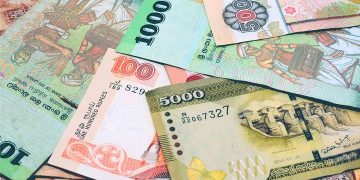Colombo, March 15 (newsin.asia): Making a strong pitch for SAARC nations to jointly combat the new coronavirus, Prime Minister Narendra Modi on Sunday proposed setting up a COVID-19 emergency fund with India committing US$10 million.
In a video conference with other leaders of the South Asian Association for Regional Cooperation (SAARC) Modi said: “ I propose we create a COVID-19 Emergency Fund. This could be based on voluntary contributions from all of us. India can start with an initial offer of US$10 million for this fund.”
“We are assembling a rapid response team of doctors and specialists in India, along with testing kits and other equipment. They will be on stand-by to be placed at your disposal, if required,” Modi told the SAARC leaders.
India had set up an Integrated Disease Surveillance Portal to better trace possible virus carriers and the people they contacted and it could share this disease surveillance software with SAARC partners, Modi said.
“Looking ahead, we could create a common research platform to coordinate research on controlling epidemic diseases within our South Asian region. The Indian Council of Medical Research can offer help coordinating such an exercise,” he said.
In his opening address, Modi said the South Asian region has reported less than 150 coronavirus cases, but “we need to remain vigilant”.
“Prepare, but don’t panic” has been India’s guiding mantra in dealing with coronavirus outbreak, he said. “We started screening people entering India from mid-January itself, while gradually increasing restrictions on travel,” Modi said.
A step-by-step approach helped avoid panic and India made special efforts to reach out to vulnerable groups. India also responded to the call of its people abroad and evacuated nearly 1,400 Indians from various countries, he said.
Modi also said India helped some citizens of neighboring countries by evacuating them from coronavirus-hit nations.
Apart from Modi, Sri Lankan President Gotabaya Rajapaksa, Maldivian President Ibrahim Mohamed Solih, Nepalese Prime Minister K.P. Sharma Oli, Bhutanese premier Lotay Tshering, Bangladeshi Prime Minister Sheikh Hasina, Afghan President Ashraf Ghani and Special Assistant to Pakistani Prime Minister on Health Dr.Zafar Mirza participated in the video conference.
The underlying message of the video conference was unitedly taking on the pandemic, but Pakistan used the occasion to raise Kashmir, with Mirza calling for the “lockdown” to be eased in Jammu and Kashmir to deal with the coronavirus threat.
Pakistan’s Dr. Zafar Mirza hailed China for its efforts to deal with the coronavirus and urged other SAARC nations to learn best practices from it. Maldivian President Solih backed coordinated approach to deal with COVID-19, asserting that no country can deal with the situation alone. “The Maldives is facing revenue and foreign currency shortfalls,” said Solih, “SAARC nations will also feel the downturn of the tourism industry in the Maldives.”
“Our collective efforts will help us devise a sound and robust strategy for SAARC region to fight coronavirus,” Nepal’s K.P.Sharma Oli said. Bhutanese Prime Minister Lotay Tshering said that it is important for all countries of the region to be on same page to combat coronavirus.

Gotabaya Rajapaksa
President Gotabaya Rajapaksa proposed to leaders of SAARC formulation of a collective response to combat COVID – 19. He further called for SAARC Ministerial Meeting to discuss measures to overcome this deadly health threat.
President Gotabaya noted that presently there are 11 confirmed cases in Sri Lanka. The first identified was a Chinese tourist. She was successfully treated at the specialized Infectious Diseases Hospital (IDH) and has since returned back to china. The second case was a Sri Lankan tourist guide, but the tourists he was with who he had obviously contracted the virus from had already returned to their home country. Sri Lanka too has not reported any deaths due to the virus.
“Our biggest challenge is to stop or minimize the virus entering into Sri Lanka and control the spreading of the virus within Sri Lanka,” the Lankan President said. “For this purpose, we have banned tourists and other people from about 12 countries, especially some EU countries, entering into Sri Lanka, following the guidelines and statistics relating to the spread of the virus, issued by the WHO. We have also banned tourists and others from South Korea and Iran coming to Sri Lanka.”
However, the challenge is with the Sri Lankan expatriate community wishing to return to Sri Lanka. “We have a large number of Sri Lankans working in Italy and South Korea. We cannot stop these Sri Lankans coming back to their home country”. The President explained that steps had been taken to subject those returning to Sri Lanka to a 14-day quarantine period in quarantine centers.
The 34 students flown back from the then high risk Wuhan province by the national airlines carrier were also quarantined for two weeks, remarked the President. However, they did not contract the virus. The other 750 Sri Lankans who were living in other parts of China were put on a self-quarantine program.
President Rajapaksa said that besides the IDH that is close to Colombo, 12 other hospitals have also been designated to treat suspected or confirmed cases. Those who show flu symptoms have been asked to self-quarantine whilst seeking medical attention.
Both the police and the Public Health Inspectors are closely monitoring the progress of the suspected patients.
Furthermore, a National Task Force with all major stakeholders empowered to take crucial decisions have been set up and meet on a daily basis with close and constant monitoring of all aspects relating to the spread of this deadly virus.
A number of measures had been taken to avoid all large gatherings, including cinema halls, sport events and international conferences, noted President Rajapaksa. All education centers from pre-schools to universities had been closed, ranging from two to six weeks. Even religious gatherings have been discouraged for two weeks. Besides these measures, sanitizing of public transport has commenced and 16 March had been declared a public holiday to keep people from the roads.
Like the other SAARC countries, Sri Lanka’s economy too had taken a nosedive, noted President. “Most of our tourists are from Italy, Germany and other EU countries, and now there is a ban on their coming. Our tourist industry was just recovering after last year’s April 21st terrorist attack. Our exports are also adversely affected. Therefore, I strongly recommend to the SAARC leaders to formulate a mechanism to assist our economies to tide over this very difficult period.”
While the novel coronavirus has been declared a pandemic, “it has been deemed controllable as well”. He acknowledged that the South Asian region, which houses several mega-cities and one-fifth of the world’s population, was at risk of the virus spreading further as each of the SAARC countries has reported positive cases.
The Bangladesh Prime Minister Sheikh Hasina said Bangladesh had formed a national committee to provide guidance to people concerned from all ministries at all levels and undertaken massive awareness-raising campaign everywhere.
Bangladesh has kept four newly-built hospitals dedicated to COVID0-19 patients. In addition, there is one more hospital in Rajshahi to exclusively handle COVID-19, she said, adding the country had stockpiles of testing kits, infra-red thermometers, isolation gowns and masks.
END





























































